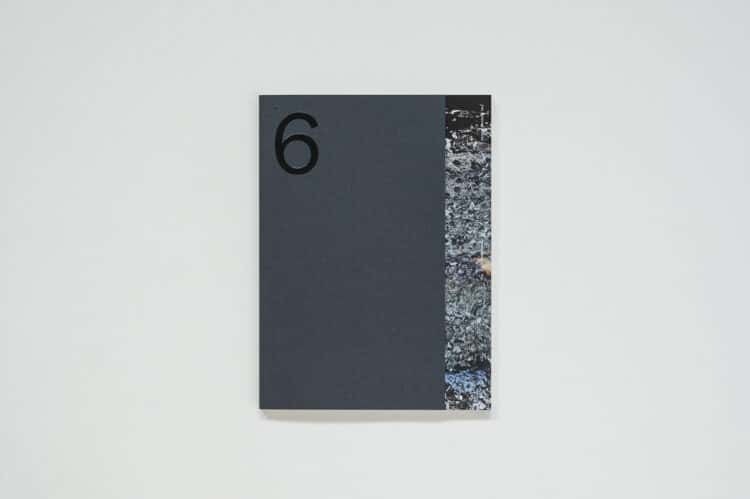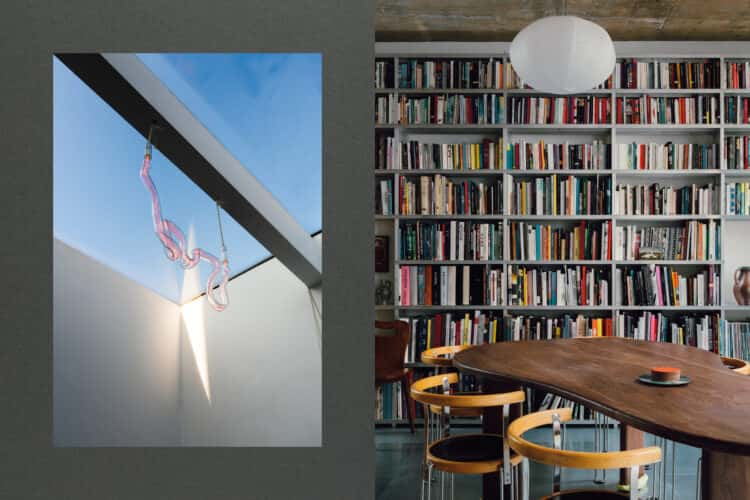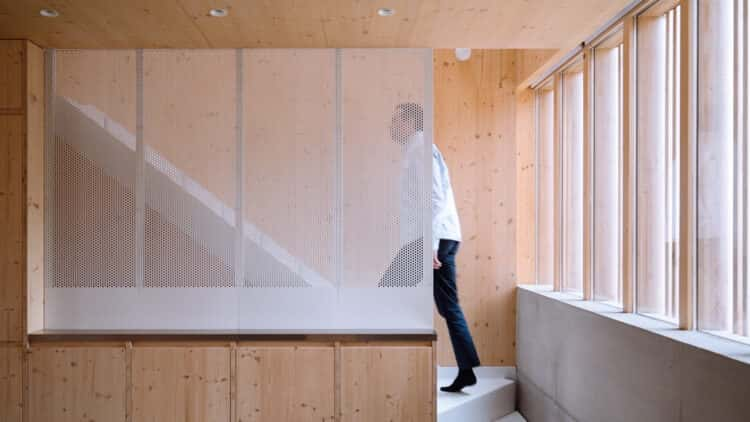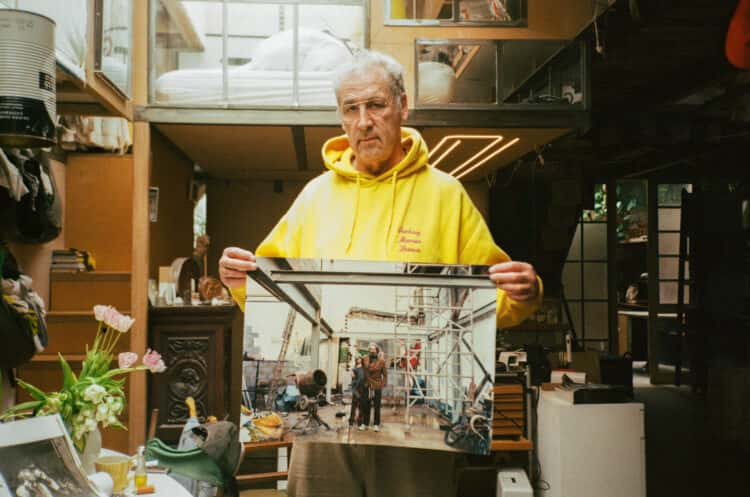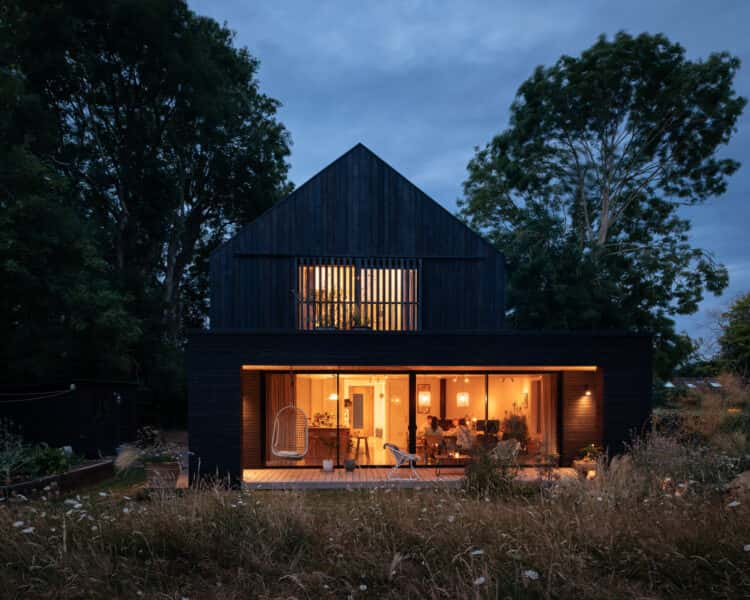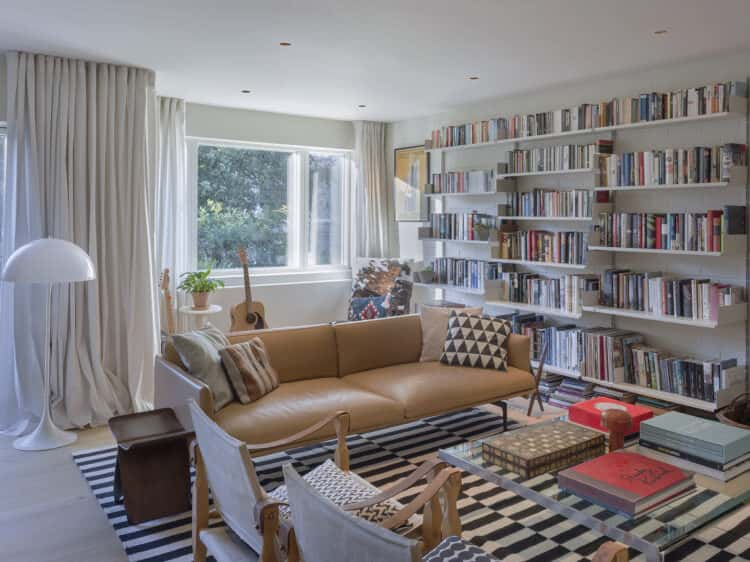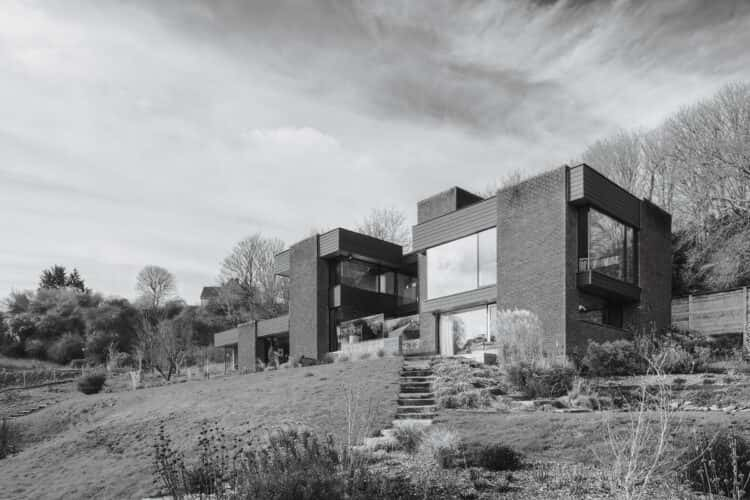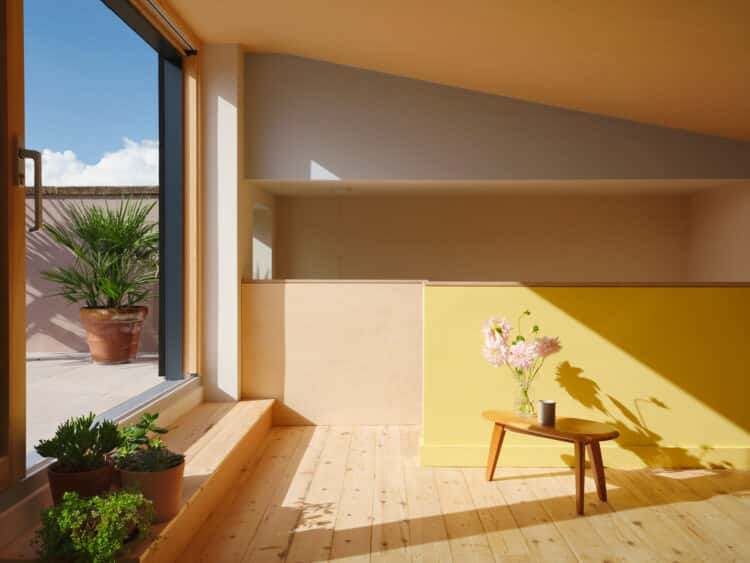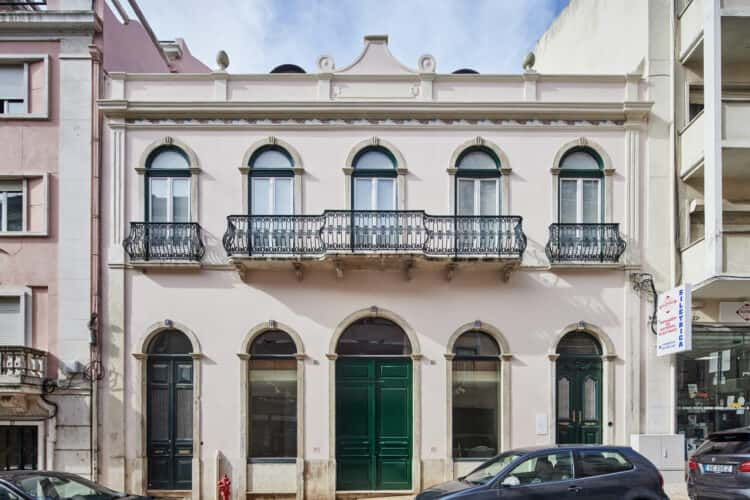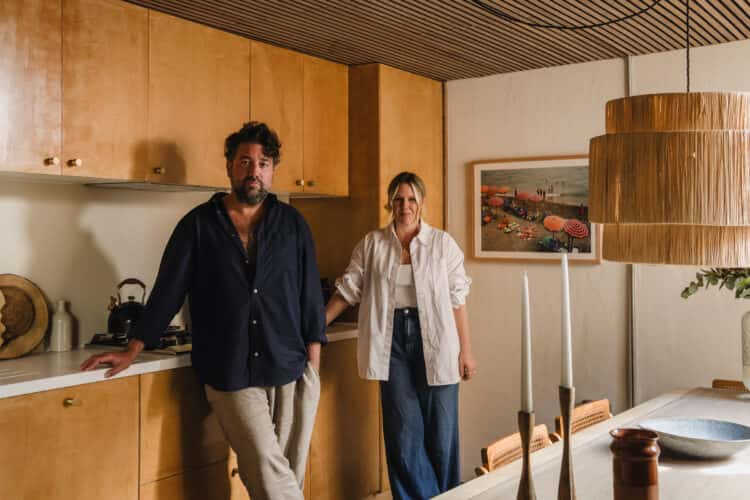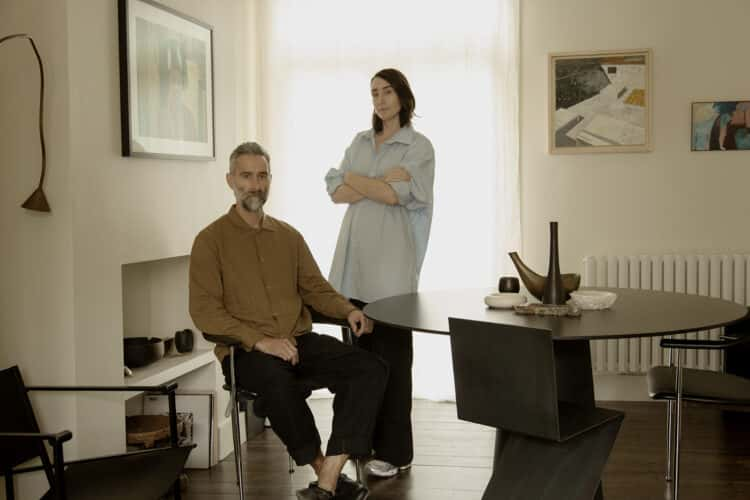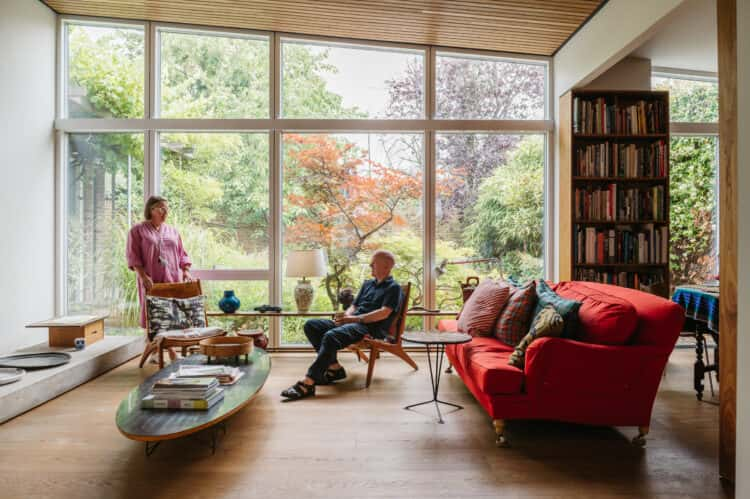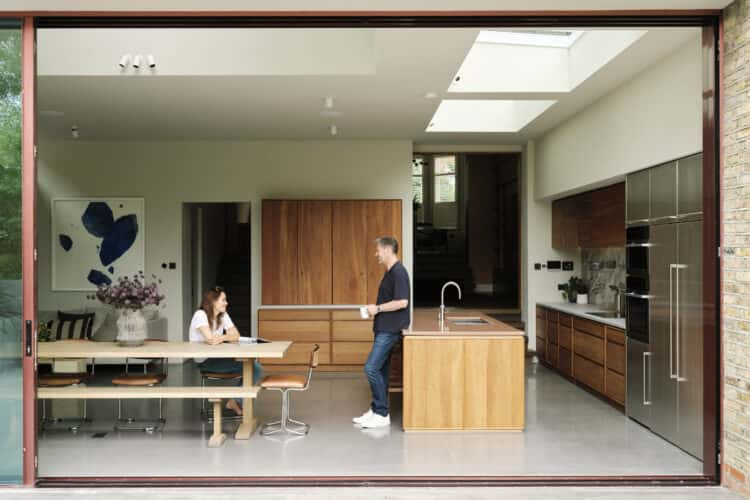Samuel Ross gives us a first look at his renovated family home in Northamptonshire
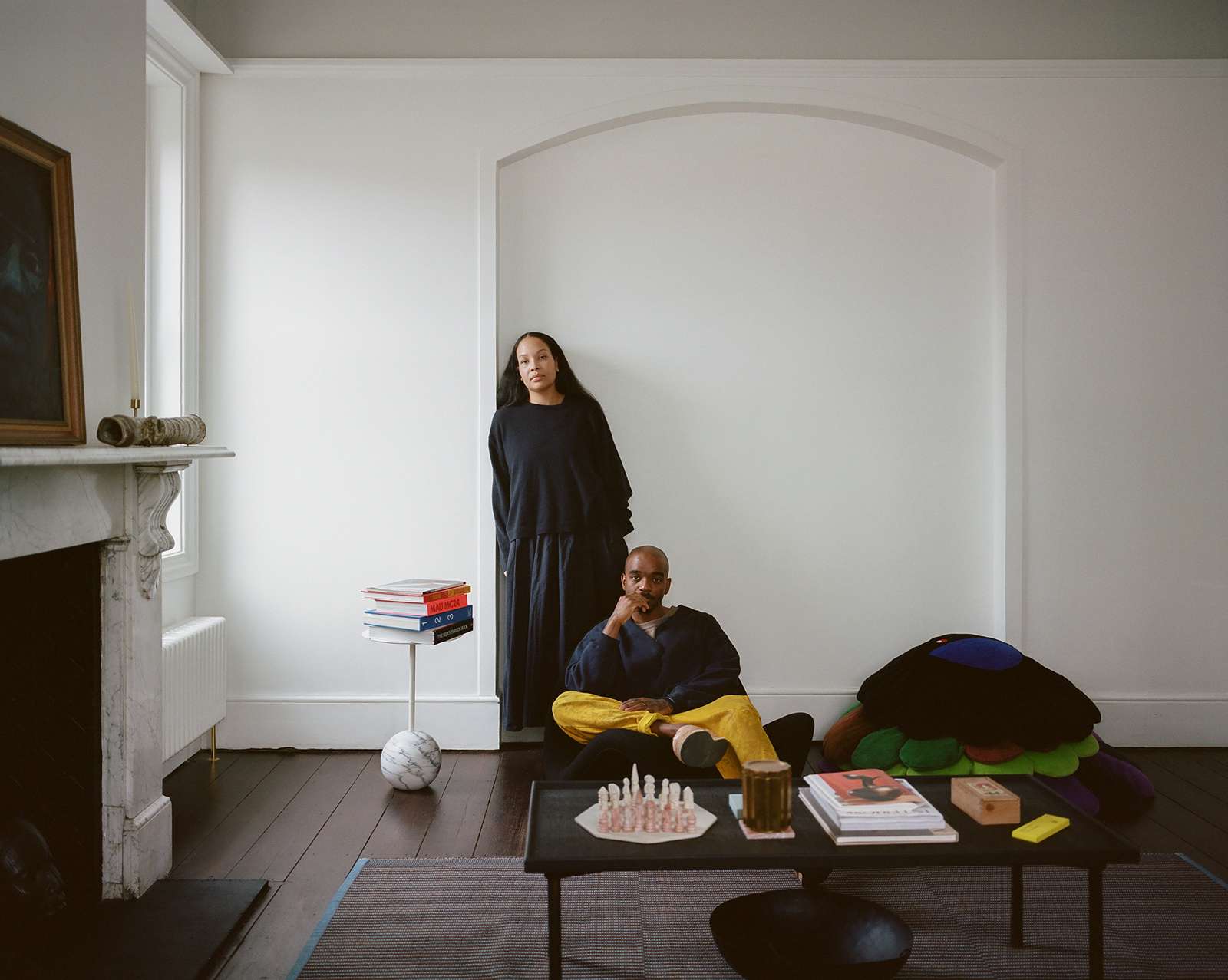
Words Billie Brand
Photography Elliot Sheppard
We’re delighted to share this exclusive story from Issue No.6 of The Modern House Magazine, which sees Samuel give us a tour of his living spaces and his art studio in the basement. If you haven’t already, you can purchase your copy here.
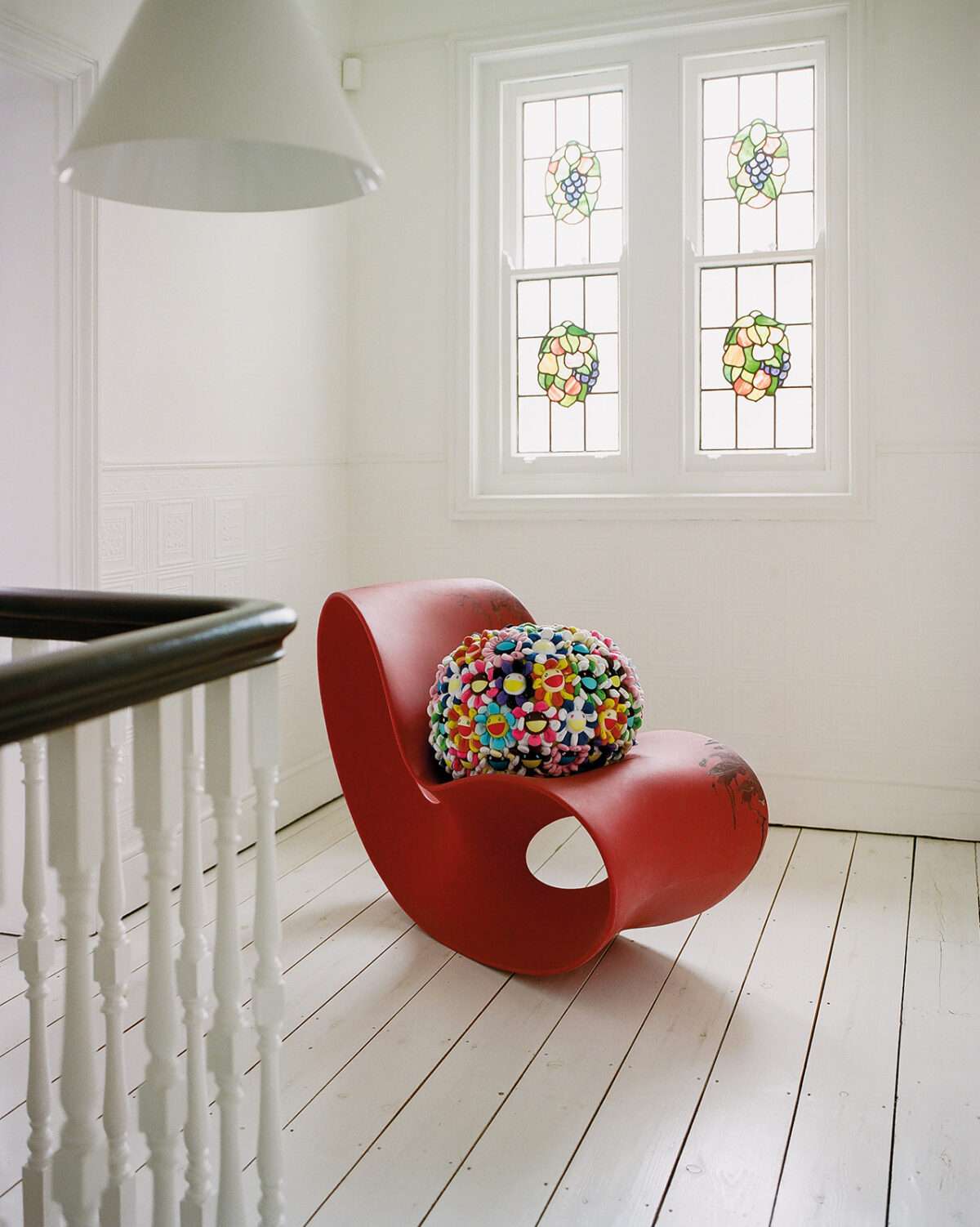
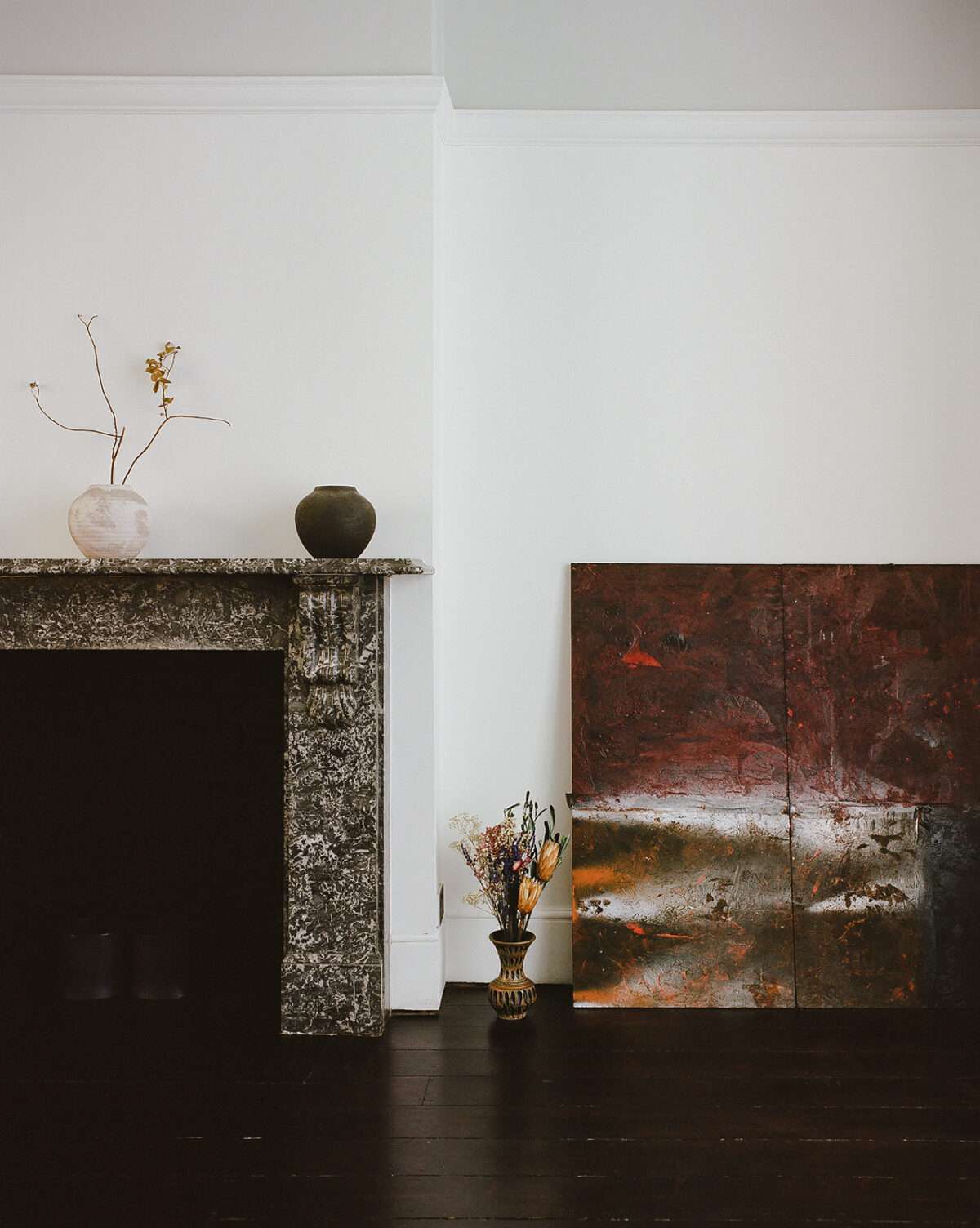
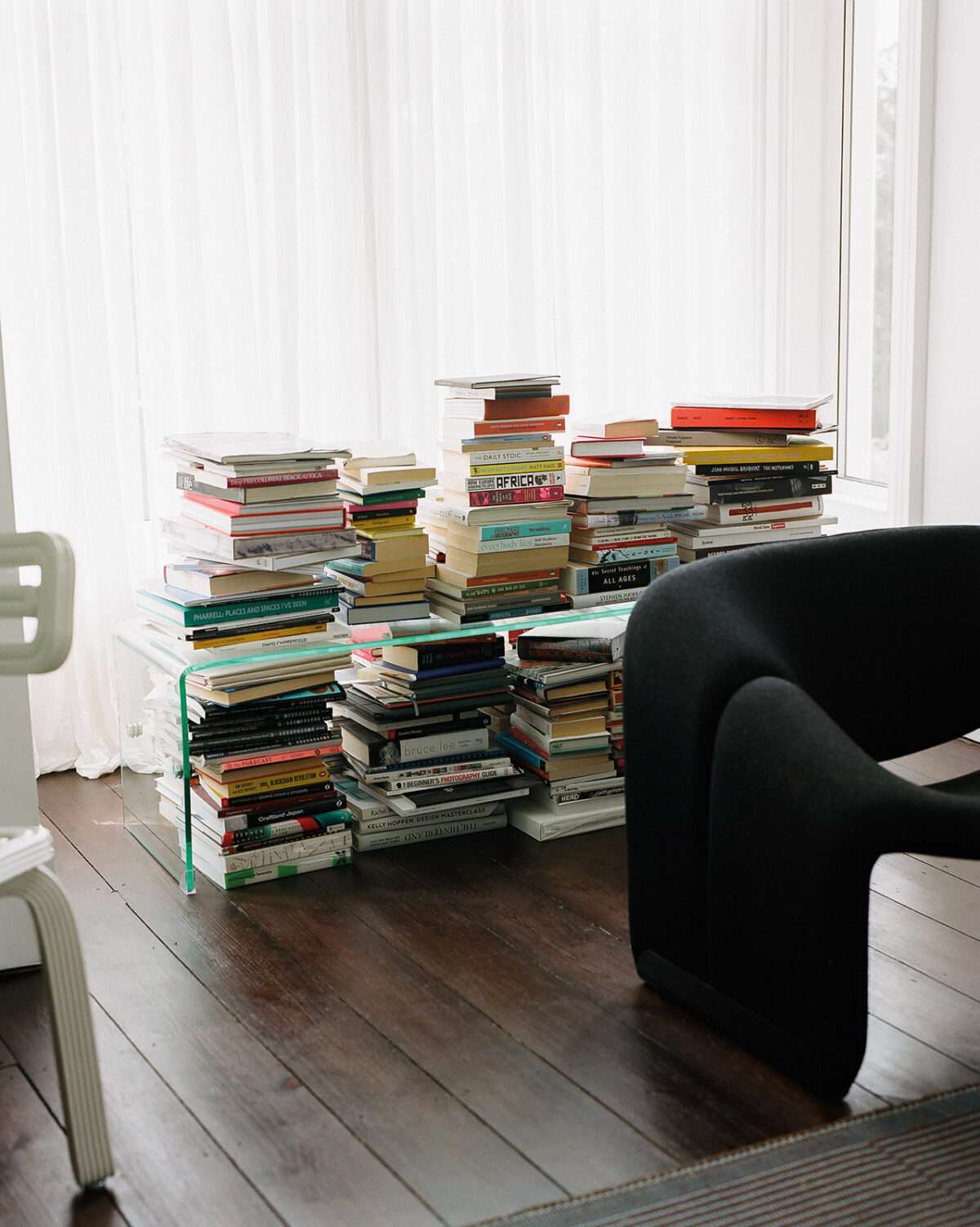
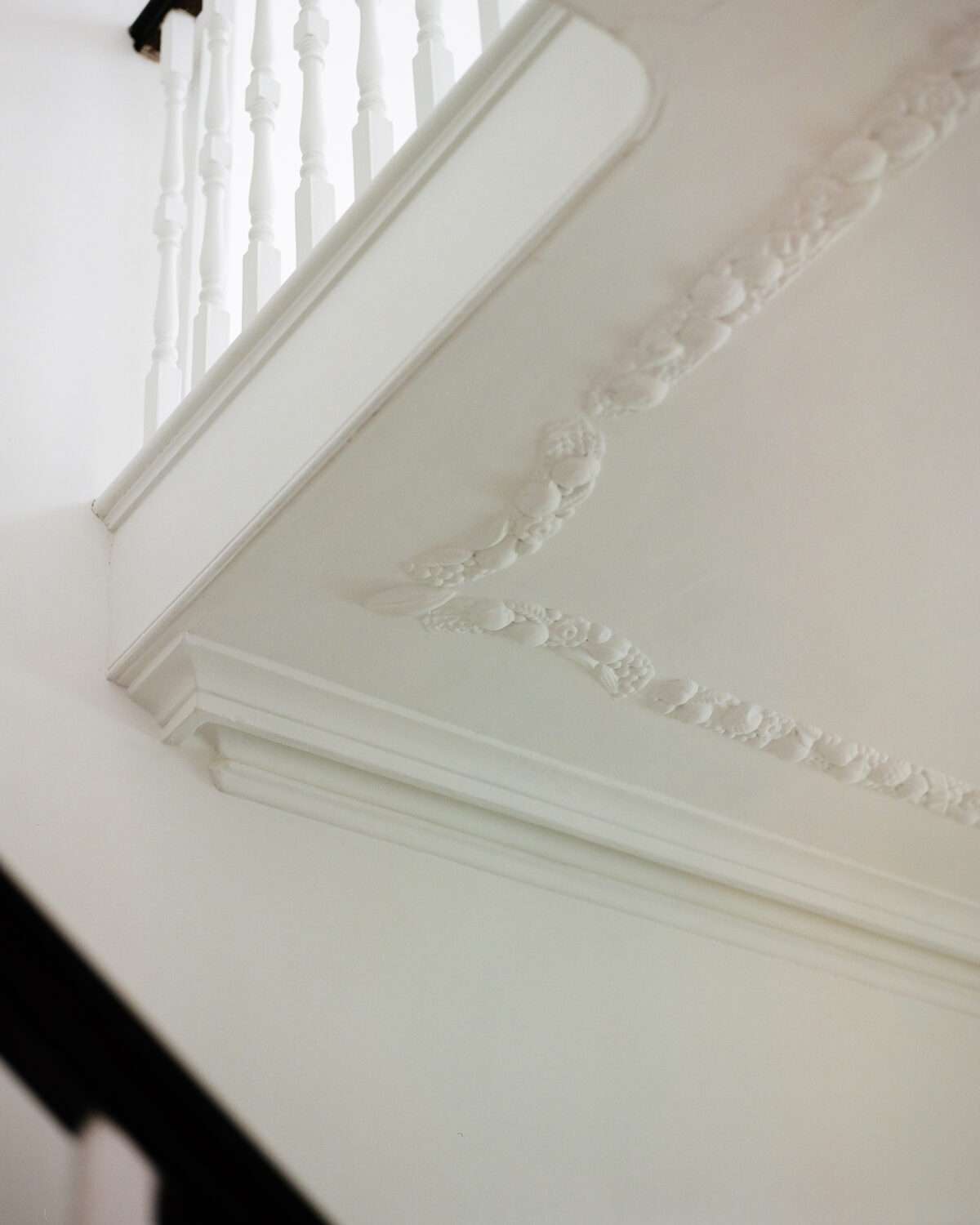
It’s a crisp Monday morning in December as Samuel Ross invites me to take a seat on a Pierre Paulin chair in the “reading room” of his home. He places three bowls of picture-perfect fruit (cherries, purple grapes, clementines) on a dark mango-wood coffee table. The gesture is fitting: the Victorian home Samuel shares with his wife Jennifer and their daughters – Genesis, five, and Olympia, one – was built in 1879 by a family of fruit merchants. It’s a narrative that’s evident in divine details such as original cornicing and stained-glass windows, which depict apples, bananas, berries and pears. I ask him if it’s important that his home has a history. “Completely,” he responds, leaning back on a pile of Takashi Murakami Kaikai Kiki pillows on the floor. “Being able to restore a building, which has a specific notion as to why it was created and who for, has been a joy.”
Samuel, an “architecture fanatic”, says his interiors style is “as stark as physically possible”. If you’re familiar with his utilitarian designs, this won’t come as a surprise. Samuel is a purist. He’s partial to raw and industrial materials. His one-bedroom apartment in the “crux of the city”, Shaftesbury Avenue, for instance, “is like a temple”. “There’s almost no furniture: one table, one chair, one bowl, knife, fork and cup.” The bedroom, meanwhile, consists of tatami mats and a low mattress – and a lot of incense. “It’s a restrained, studious space,” he continues. “I don’t want to use it as a ‘home’ because I don’t want to spend time there. I want to be here with my family.
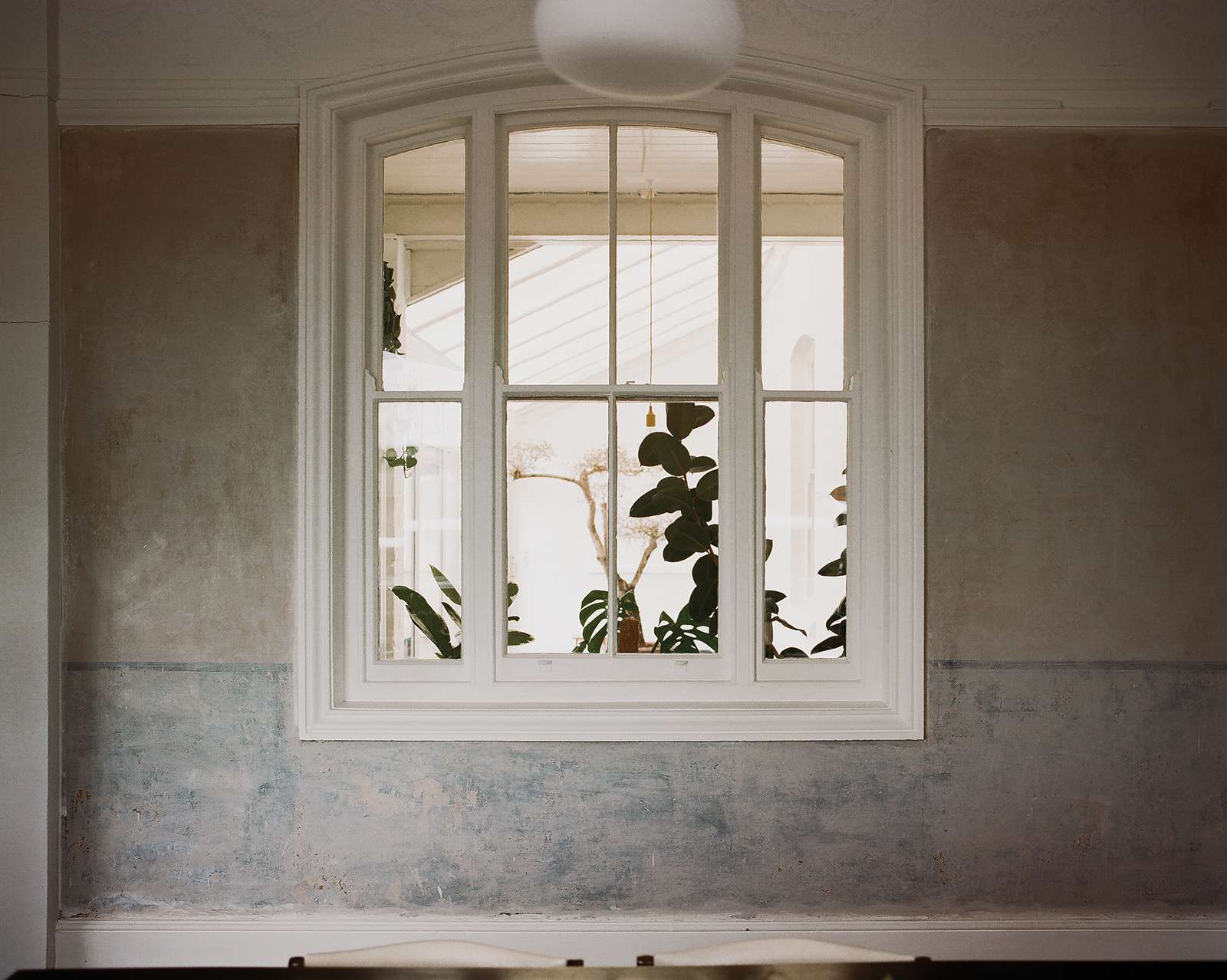
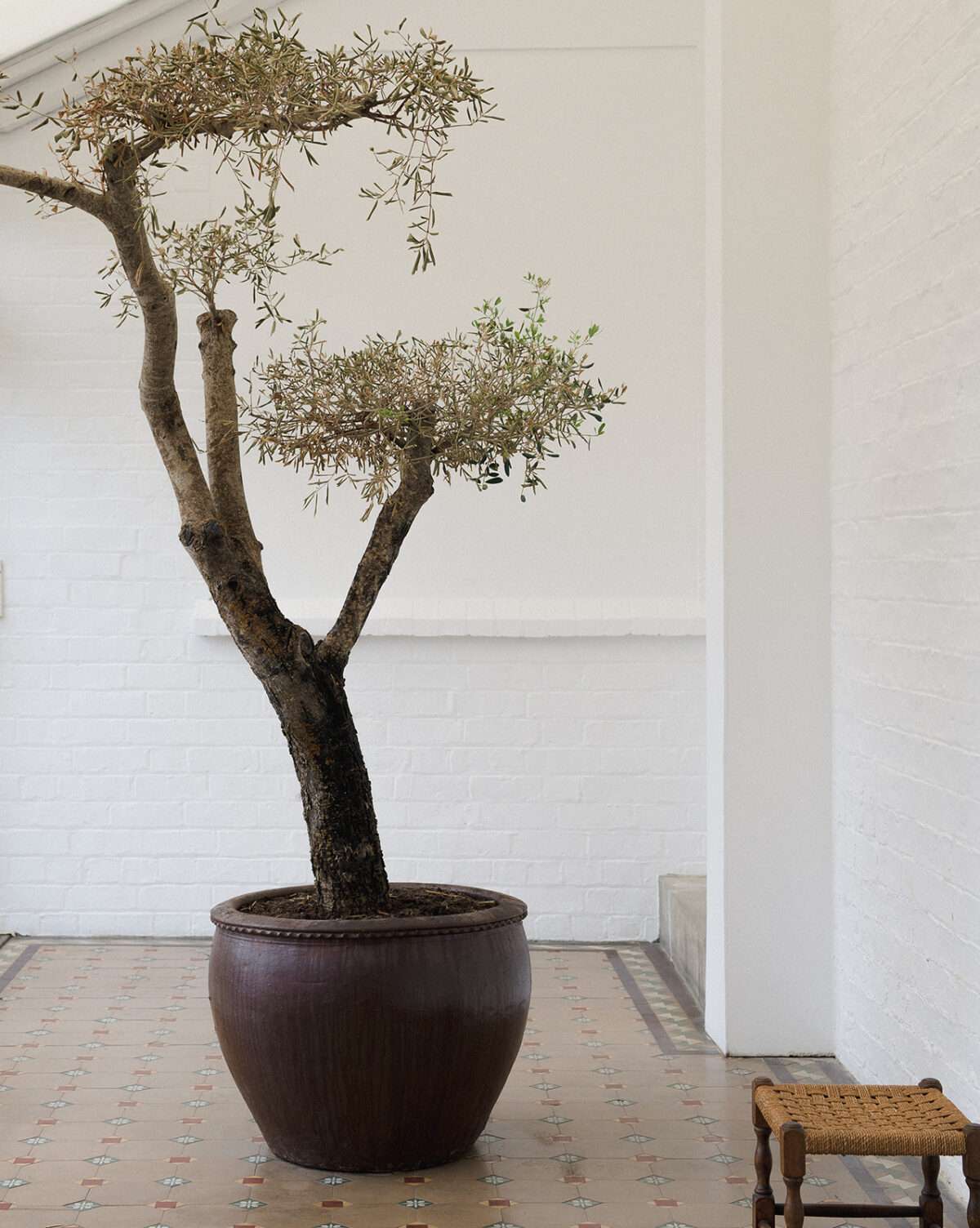
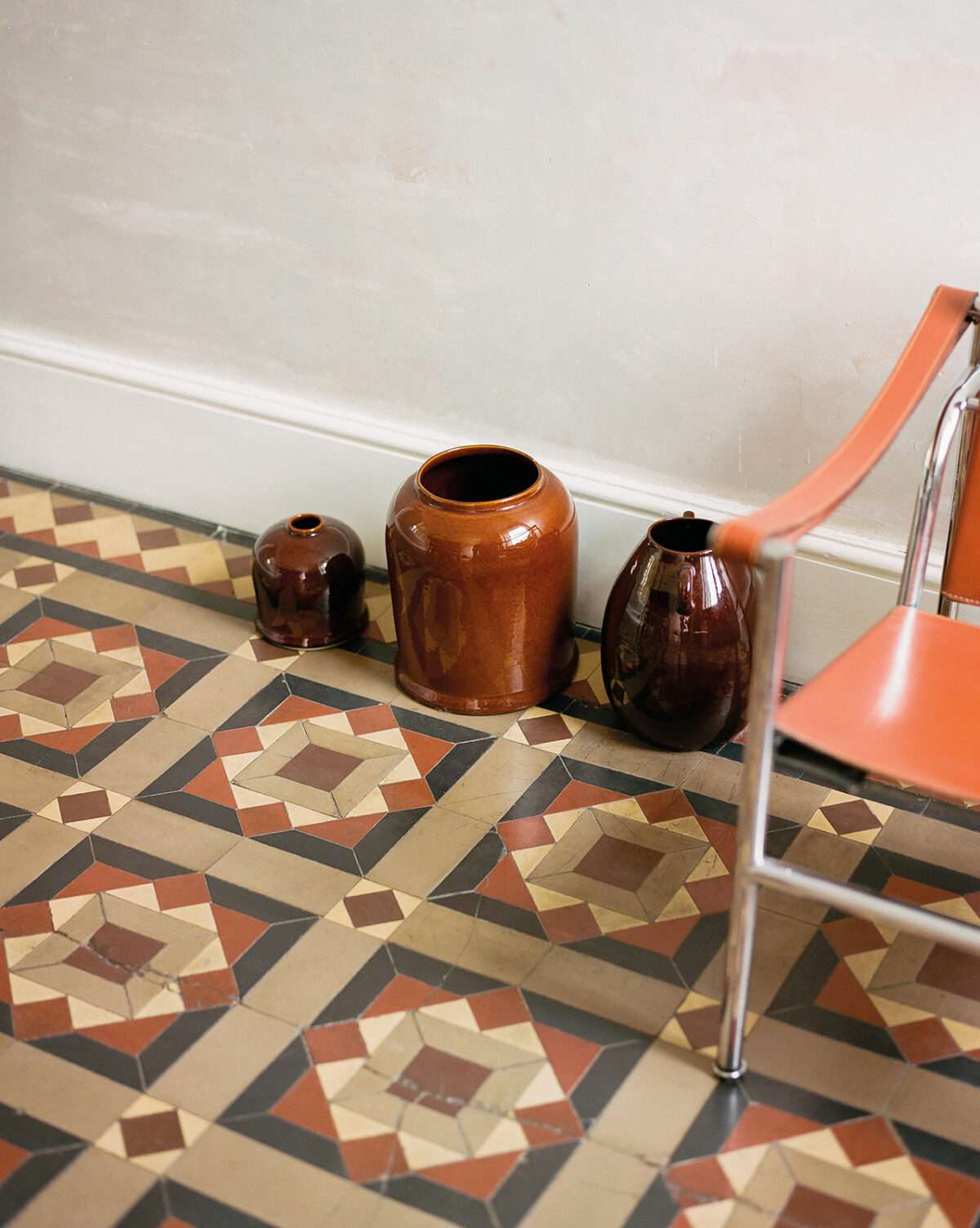
Here in Northamptonshire, the interiors don’t feel stark. They are clean and considered, not cold; serene without being stoic. “Creating the feeling of entering a spiritual space was at the front of my mind,” he says of the sanctuary-like scheme. Samuel says he and Jennifer “cared deeply about tonality” – and it shows in the pleasing neutral hues of the wall paint and plaster. There are also references to Samuel’s heritage (he was born to second-generation Windrush parents), namely the ebony floorboards, a tribute to the black wood found in Caribbean homes.
Before moving here, Samuel and Jennifer – who were born in Brixton and Stockholm respectively – had been living in various corners of the capital, from a converted warehouse in Tottenham to a new-build in Royal Wharf. “None of it felt like home – and we never felt the urge to personalise any of those spaces,” Samuel says. But given that his businesses are based in London – the headquarters of A-Cold-Wall* and SR_A are in 180 The Strand – it made sense for the couple to be there. “When Genesis was born, however, there was an opportunity to put down roots,” he explains, “and we knew we wanted the peace of the countryside.”
Having grown up in this Northamptonshire neighbourhood – in the home where his mother, a painter and lecturer, still lives – it was an obvious choice. “I know it like the back of my hand,” Samuel says. “I learned to play basketball in courts that are 20 metres away.” In fact, he’s spent many years walking past this house. “The dramatic architecture always caught my eye,” he says of the façade, which features exquisite cornicing, a pitched canopy roof and ornate pillars framing the front door. “Victorian homes have a fanaticism to them,” he continues. “I grew up in period buildings and it’s been crystallised in my mind that’s what a ‘home’ is. I wanted to offer that type of fantasy to my children, too.”
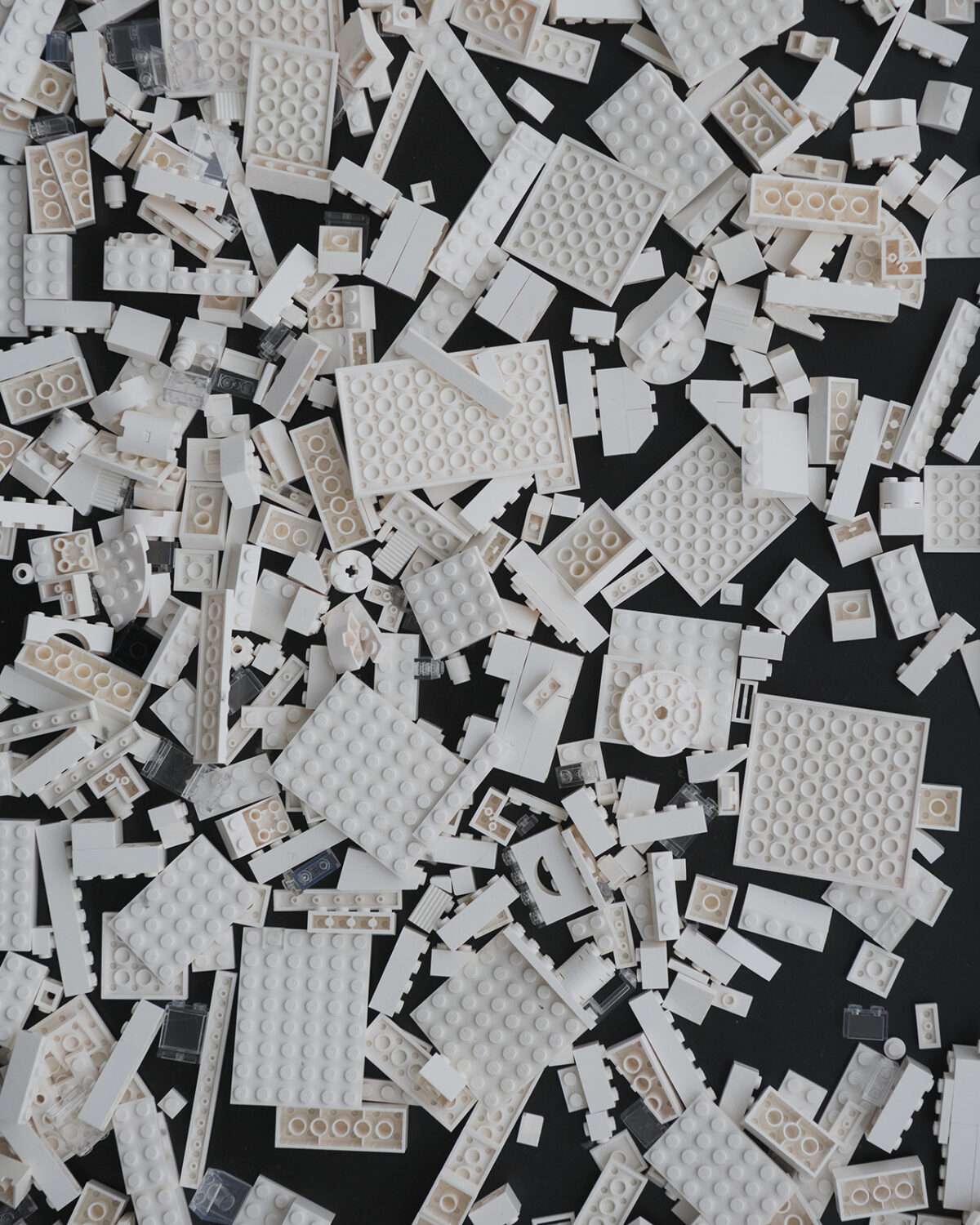
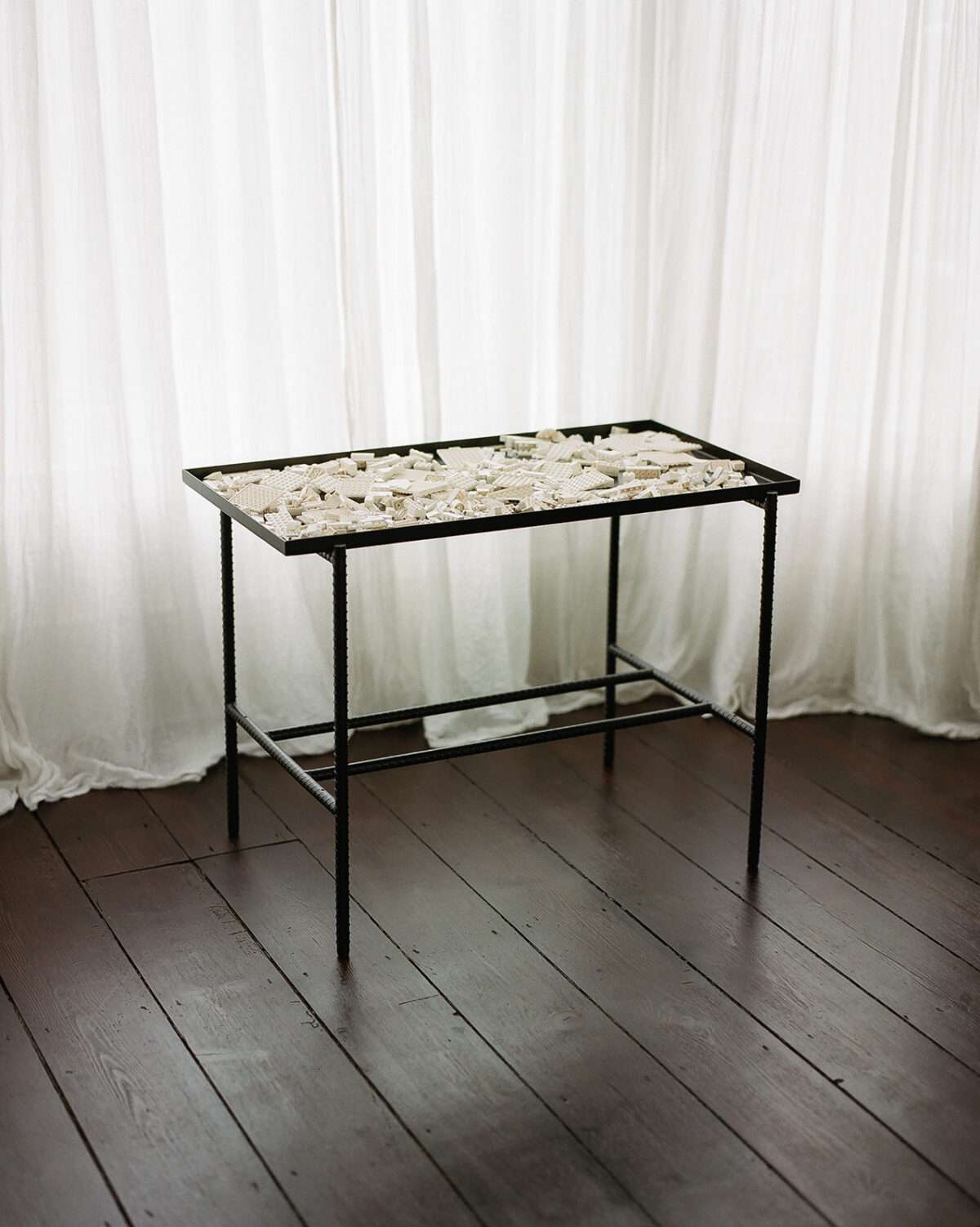
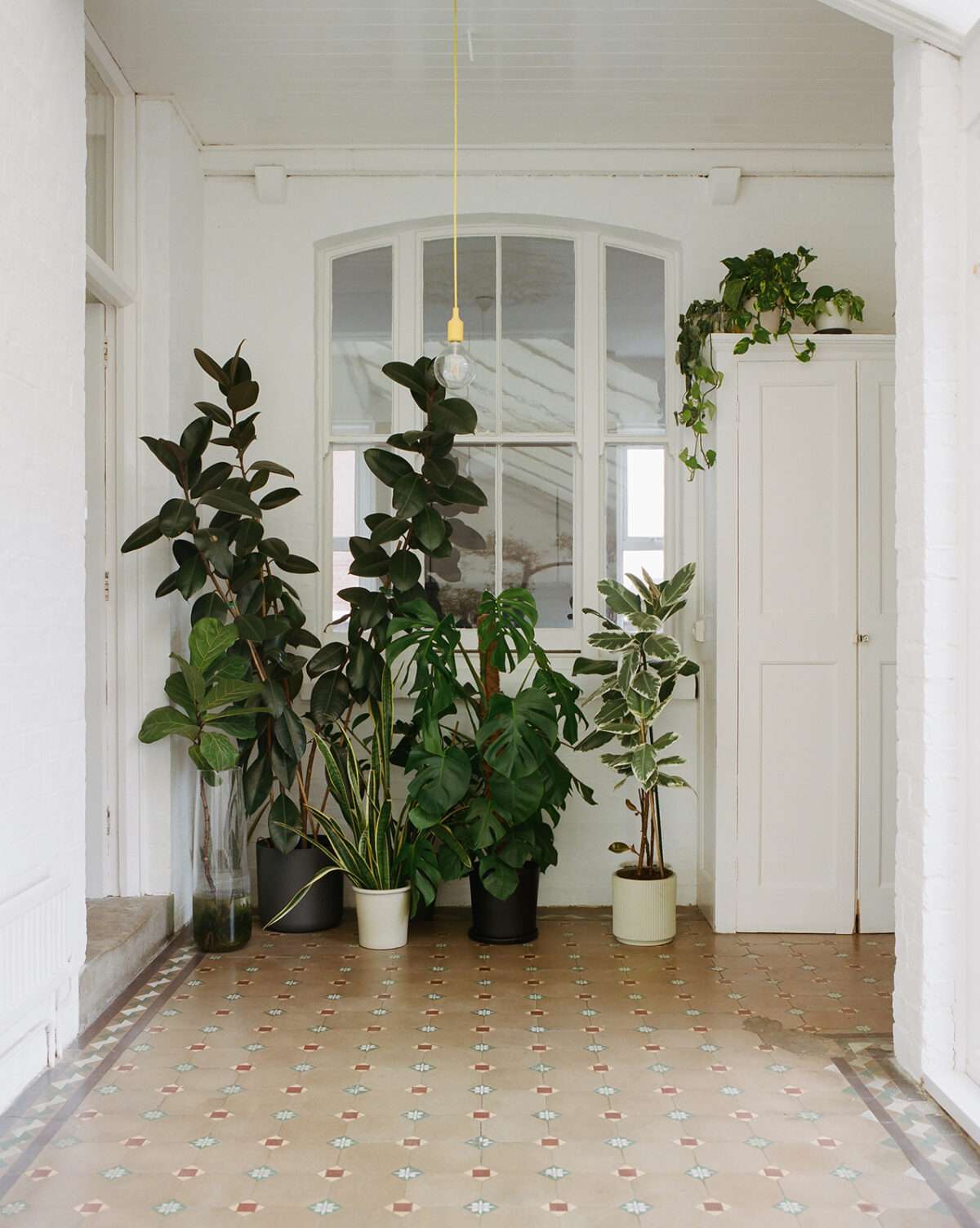
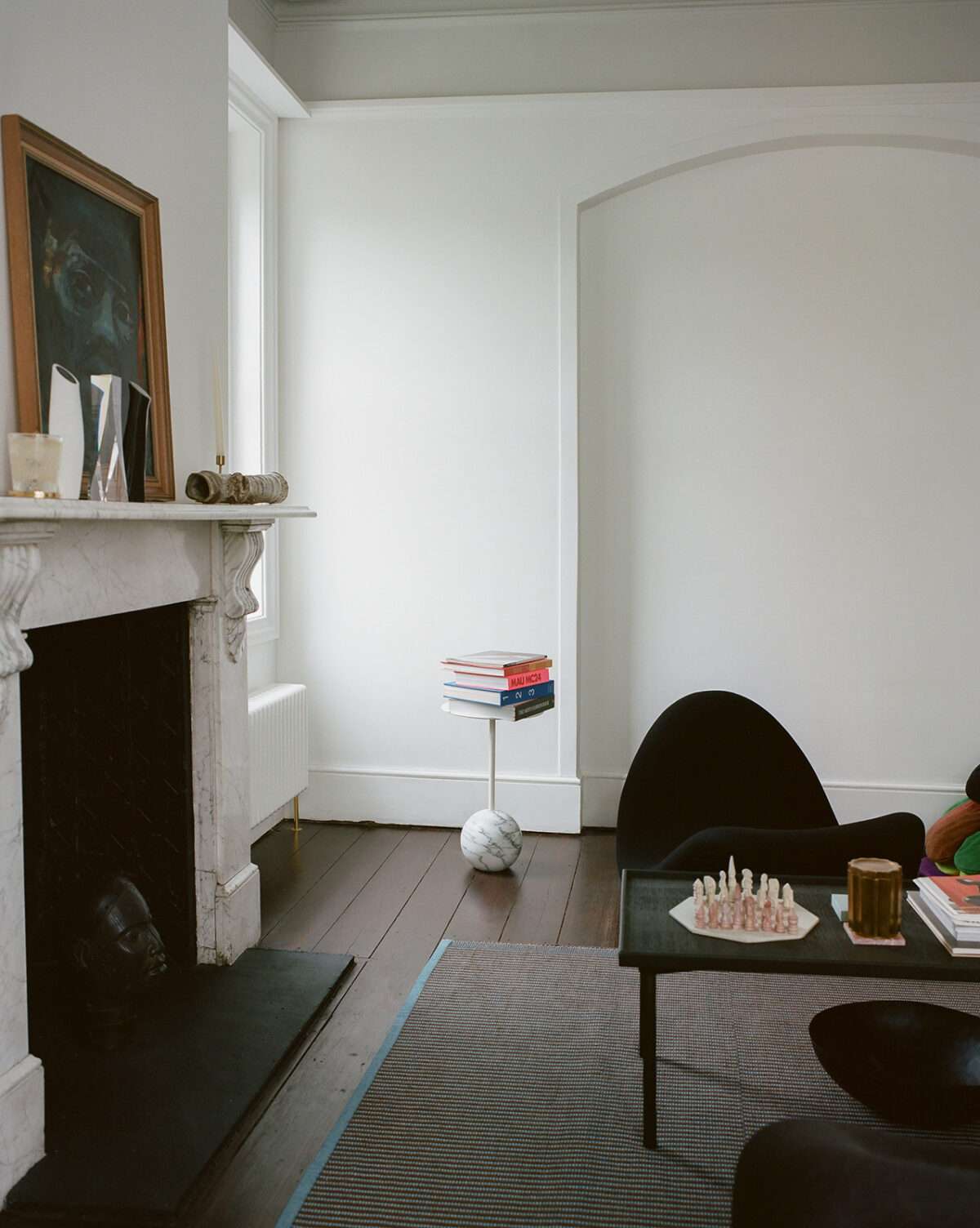
When Genesis viewed this house, “she walked in and said ‘Wow!’”, laughs Jennifer. “That’s how we knew it was special.” Their eldest was impressed by the grand proportions, but, back then, the interiors couldn’t have looked more different than they do today. Samuel hands me the sales brochure, showing the house as a series of baroque, decadent rooms with “a lot of gold leaf ”. But he saw past the frills. “The previous owners took pride in the property,” says Samuel, who fell in love with its bones. “We didn’t want to desecrate it. We wanted to give the building space to breathe.”
Samuel began the restoration by peeling back layers of old wallpaper, while Jennifer and Genesis spent time in Stockholm. “Oh, it was beautiful but painful,” he sighs. Alongside his lead contractor, Jason Cool, Samuel explored “different washes, going back and forth, seeing how each one settled”. The walls aren’t perfect, such as in the dining room, where the “veins and capillaries” of the house are particularly evident; neither are the original tiled floors, chipped in all the right places – but that was all part of the plan. “We were mining for details.”
When Jennifer and Genesis moved back in, it presented the couple with a new challenge. “We agree on a lot of things,” says Jennifer, “but we have some very different opinions, too.” What do they disagree on? “The volume of objects,” Samuel says. They’ve found a happy medium. The reading room, for instance, is a mix of modernist furniture, artful pieces and piles of design books (including In Praise of Shadows by Jun’ichirō Tanizaki and The Beauty of Everyday Things by Soetsu Yanagi, both of which influenced this project). In the conservatory, meanwhile, there’s little more than an olive tree.
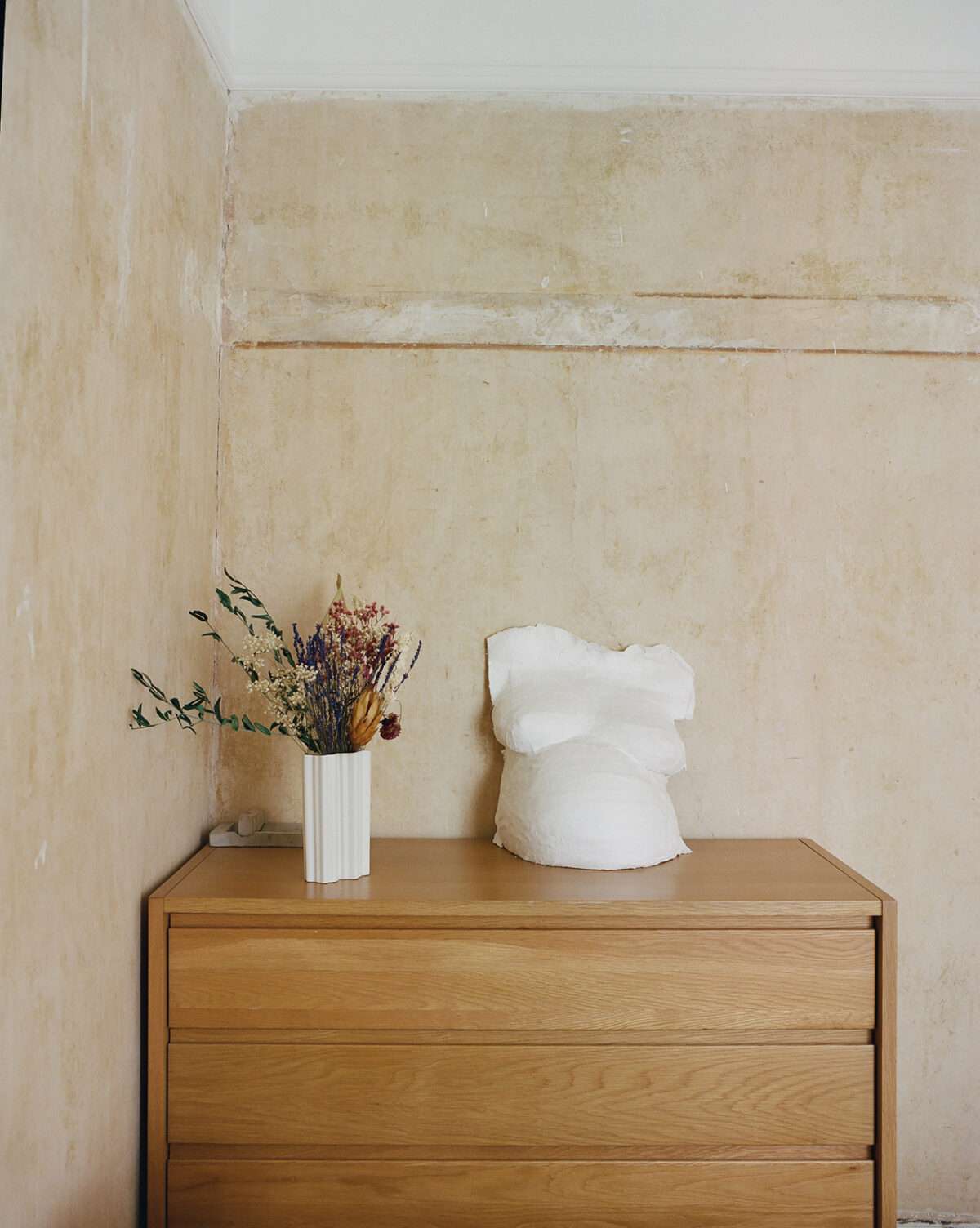
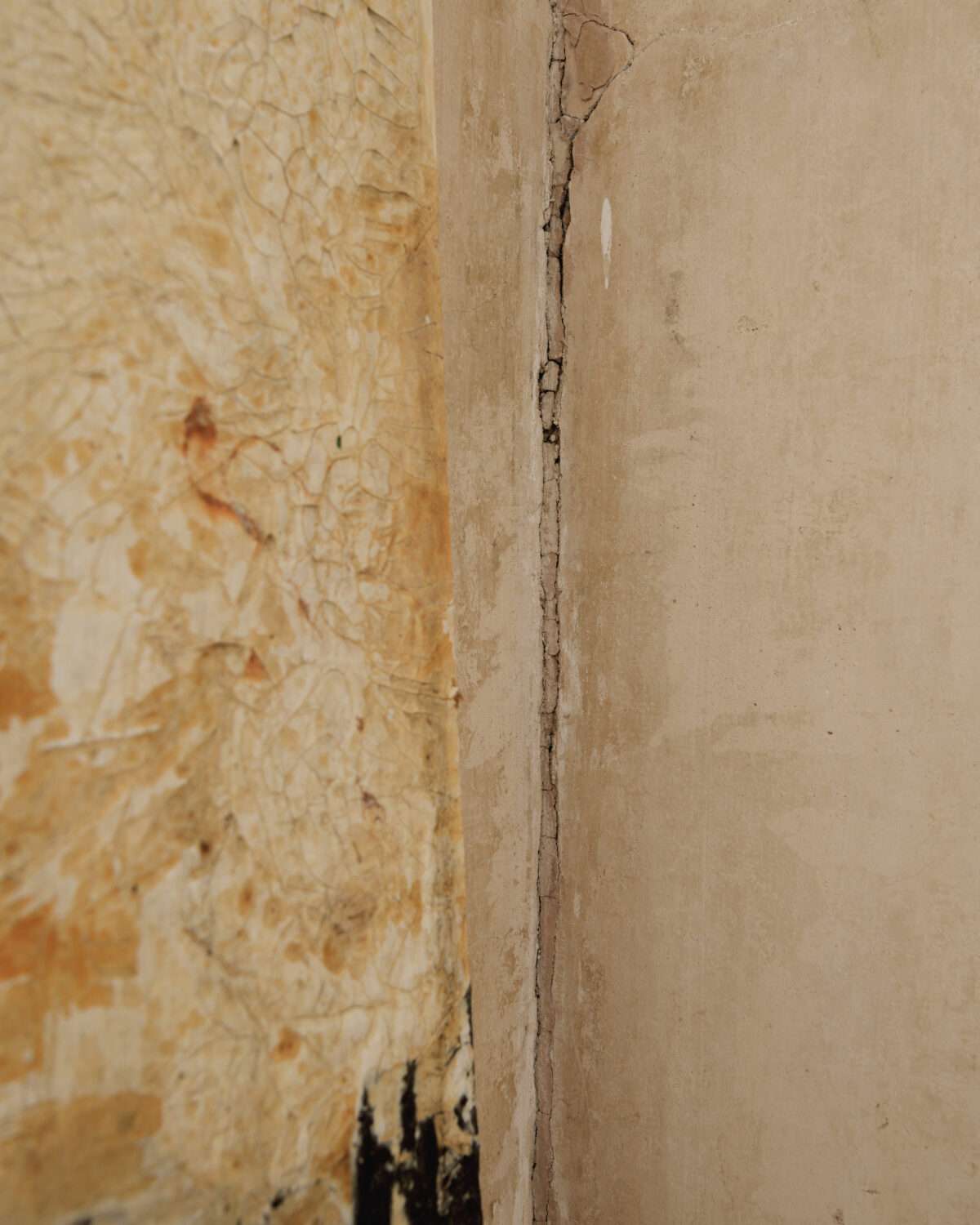
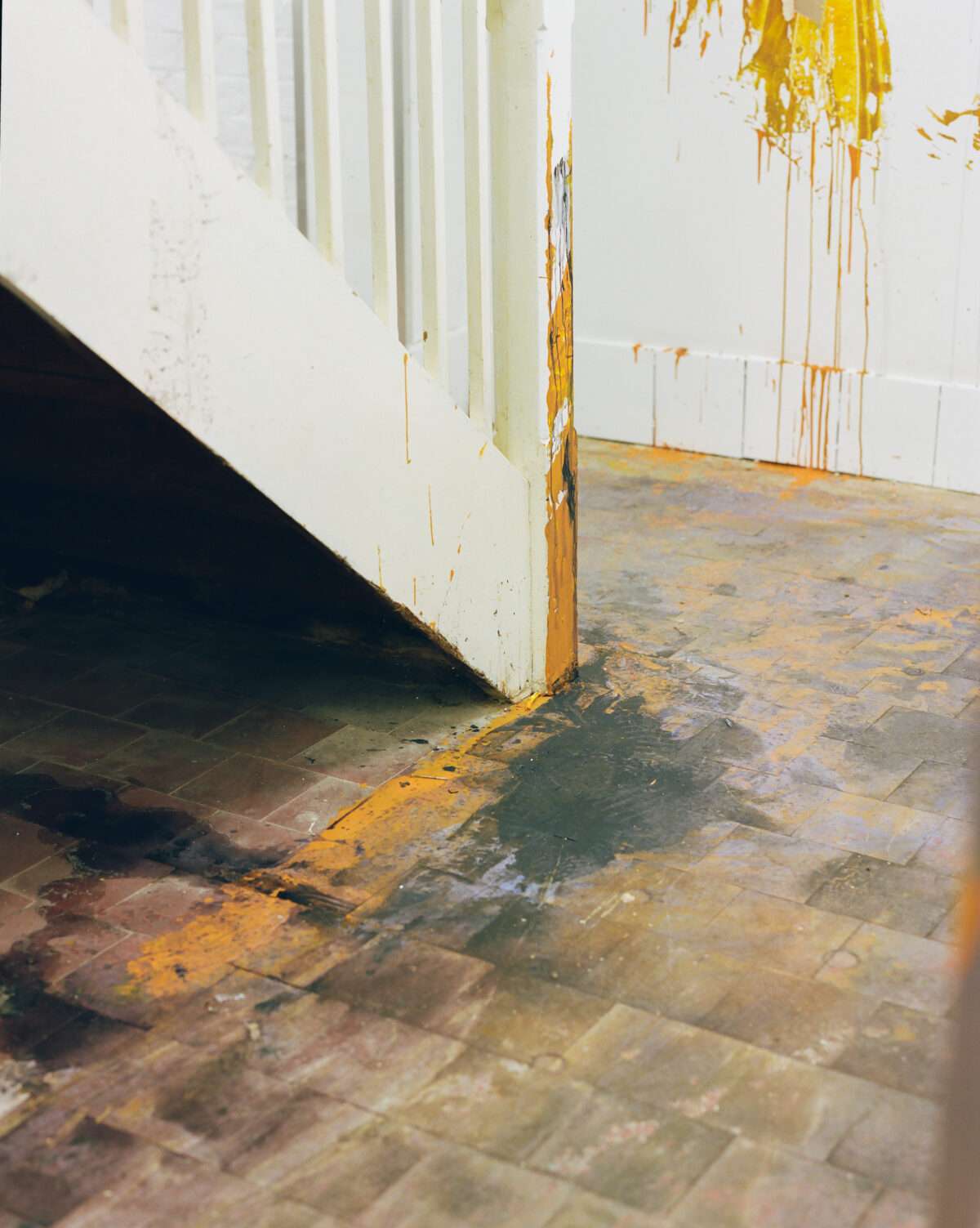
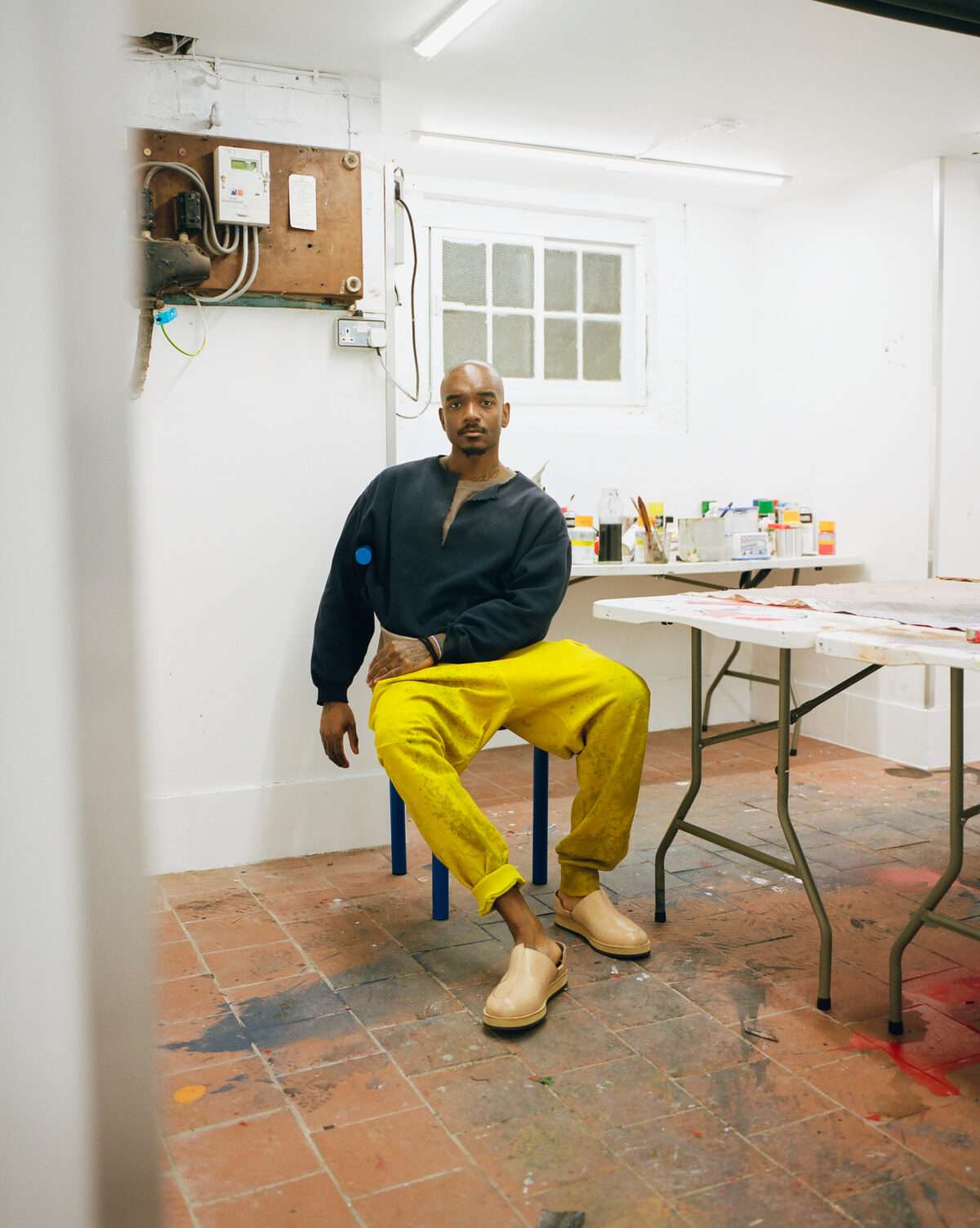
After we finish the home tour, Samuel has one more space to show me: a behemoth basement he’s converted into a studio. But it’s not for designing clothes: it’s for painting. Although he trained in graphic design and pursued fashion, art was Samuel’s first love. After all, it’s in his blood: Samuel’s grandmother, mother and father (a stained-glass artist who studied fine art at Central Saint Martins alongside Sonia Boyce and Damien Hirst) are rather skilled with a brush. His parents are naturally thrilled that Samuel’s been painting. “They’re elated,” he beams. “I grew up surrounded by large canvasses and beautiful paintings and art is part of our family’s identity.”
Samuel has been developing his own abstract style for “about three years” and says this house gave him “the opportunity to focus on large-scale painting”. It takes him four months to finish a single piece. “I need time. I’ve been thinking about mixing one vat of green paint for three weeks now – and I haven’t done it yet. I don’t want to rush it.”
One of his completed works – a square canvas covered in thick strokes of dark-red and brown paint, punctuated with flashes of orange and white – leans against a wall in the living room, but there are plenty in progress, too. And he’s on a deadline: in April 2023, he’ll be showcasing his art to the public for the first time, at the White Cube in Bermondsey. “I’m ecstatic,” he says. “It’s what I’ve always wanted to truly do.”
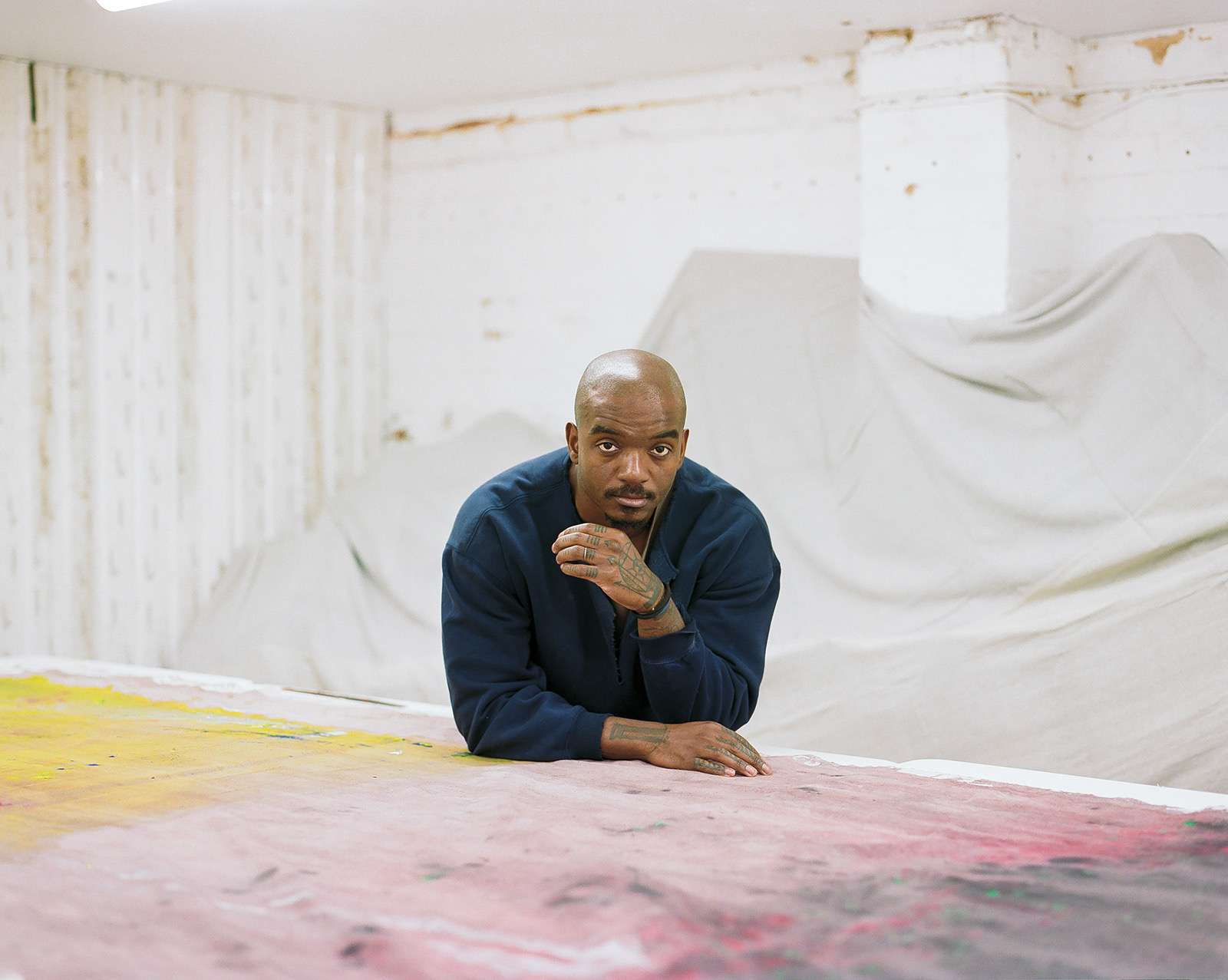
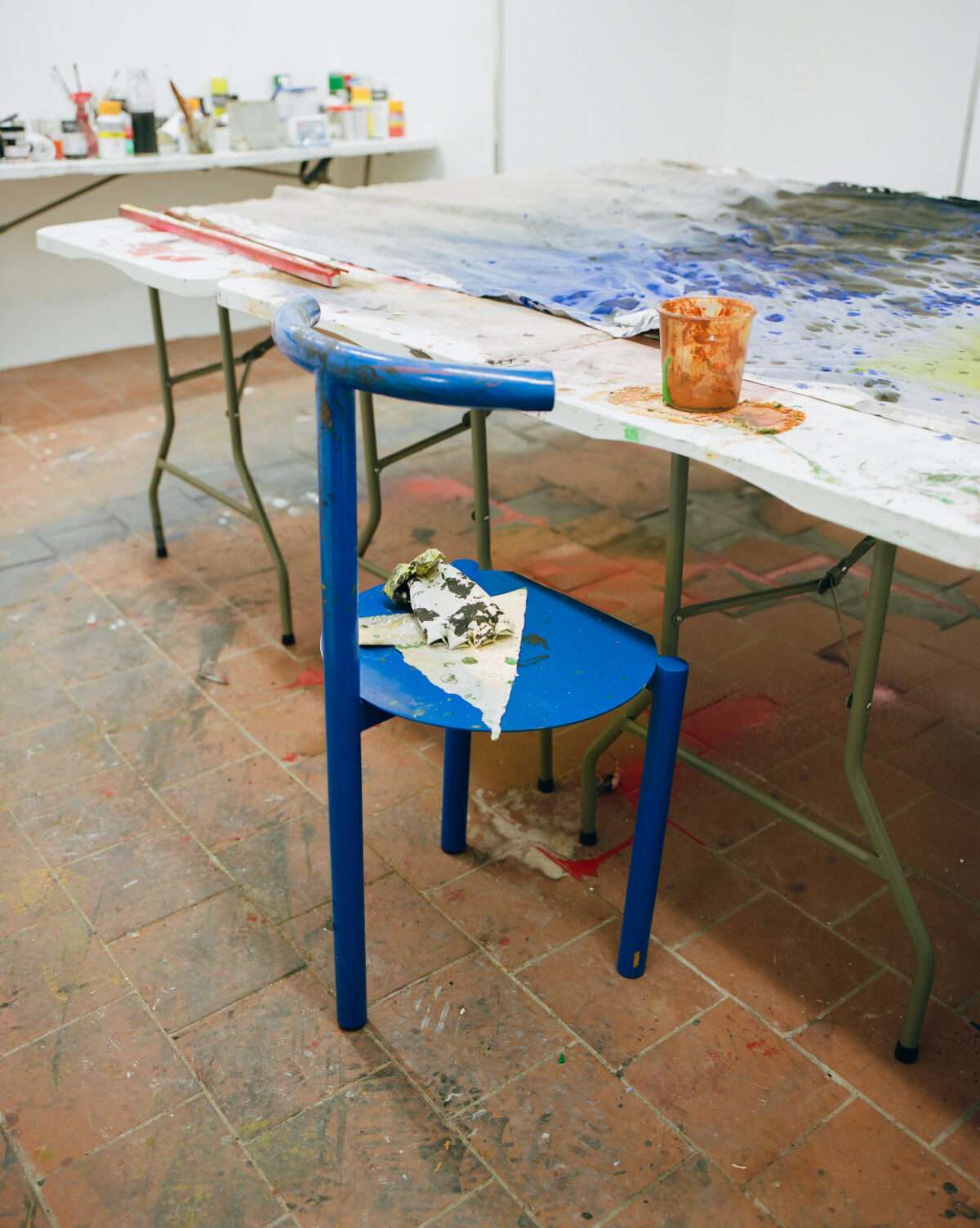
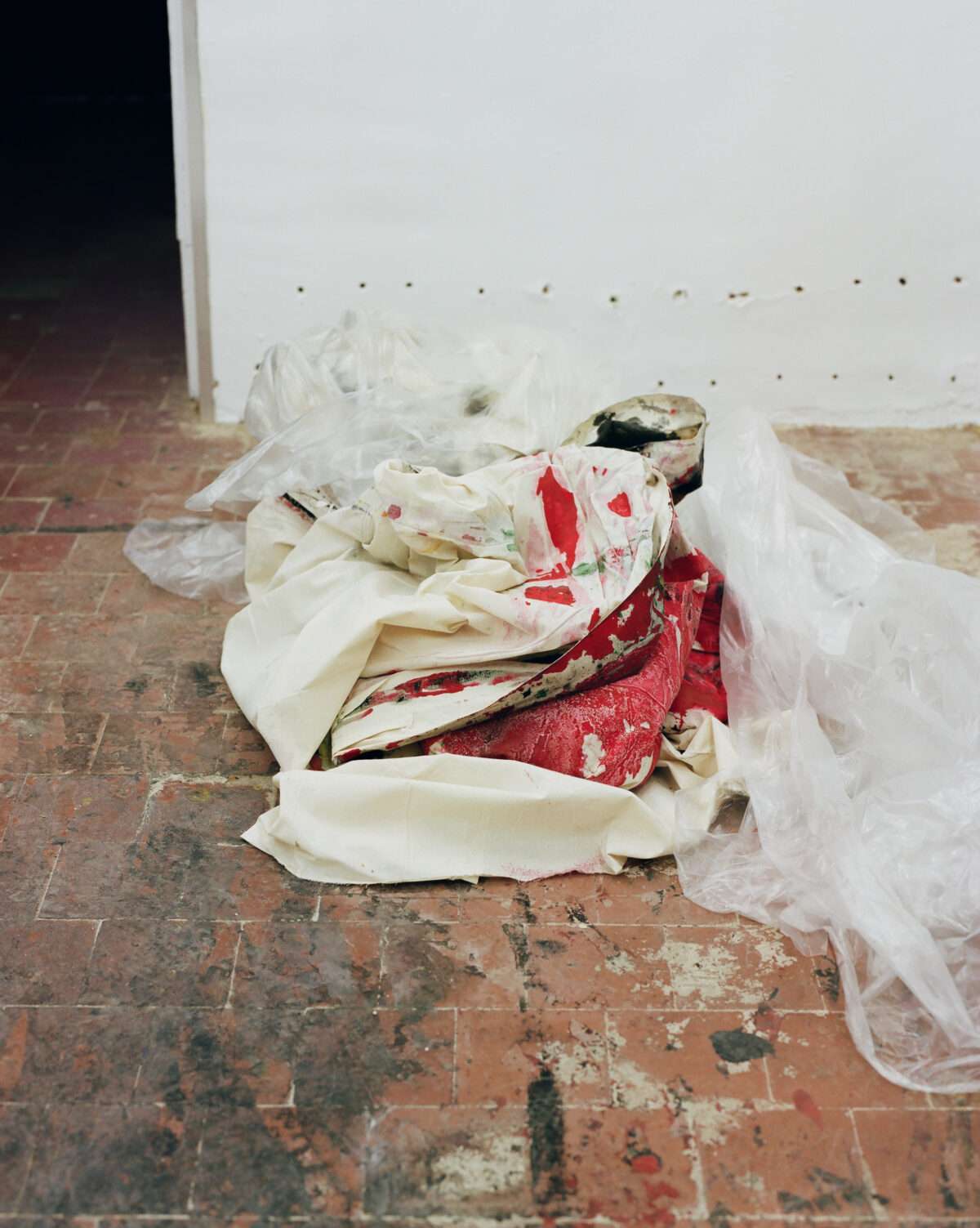
There’s a small easel in a corner of the studio, which belongs to Genesis. “If she sees abstract gestures from me, she integrates them into her own work,” he smiles. “It’s important that she has her zone.” It’s a reminder that, above all else, this is a functioning family home. “I used to come back from London and be stressed if things weren’t at the right angles or in the right places,” Samuel admits. It took him time to get used to. “I’ve learned to love and enjoy the house as a place for our two young children. We’re in a different phase of life than before and our home needs to respond to different scenarios like a sponge.” How does it feel coming back here now? “I’m still in awe of the house. Every time I walk up to it, I have a soft moment of relief.” He pauses. “It feels incredible.”
